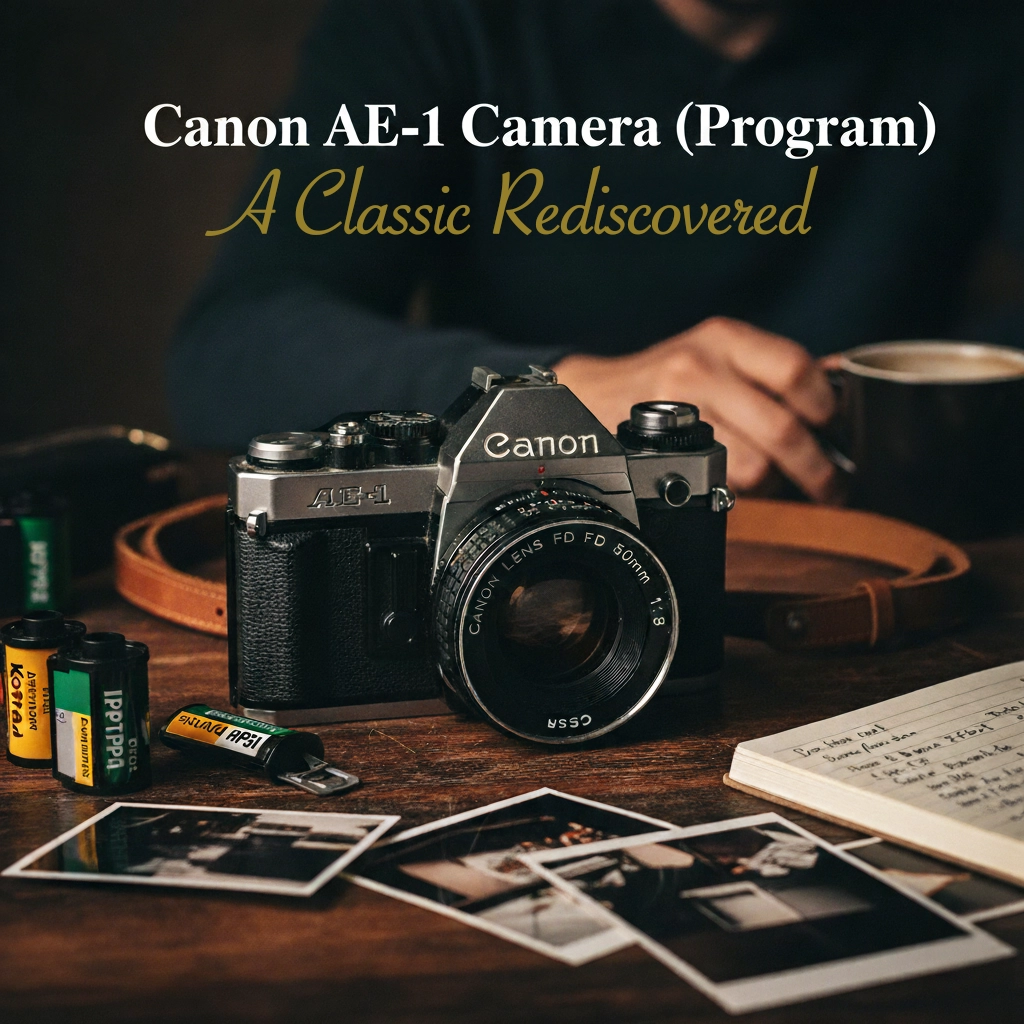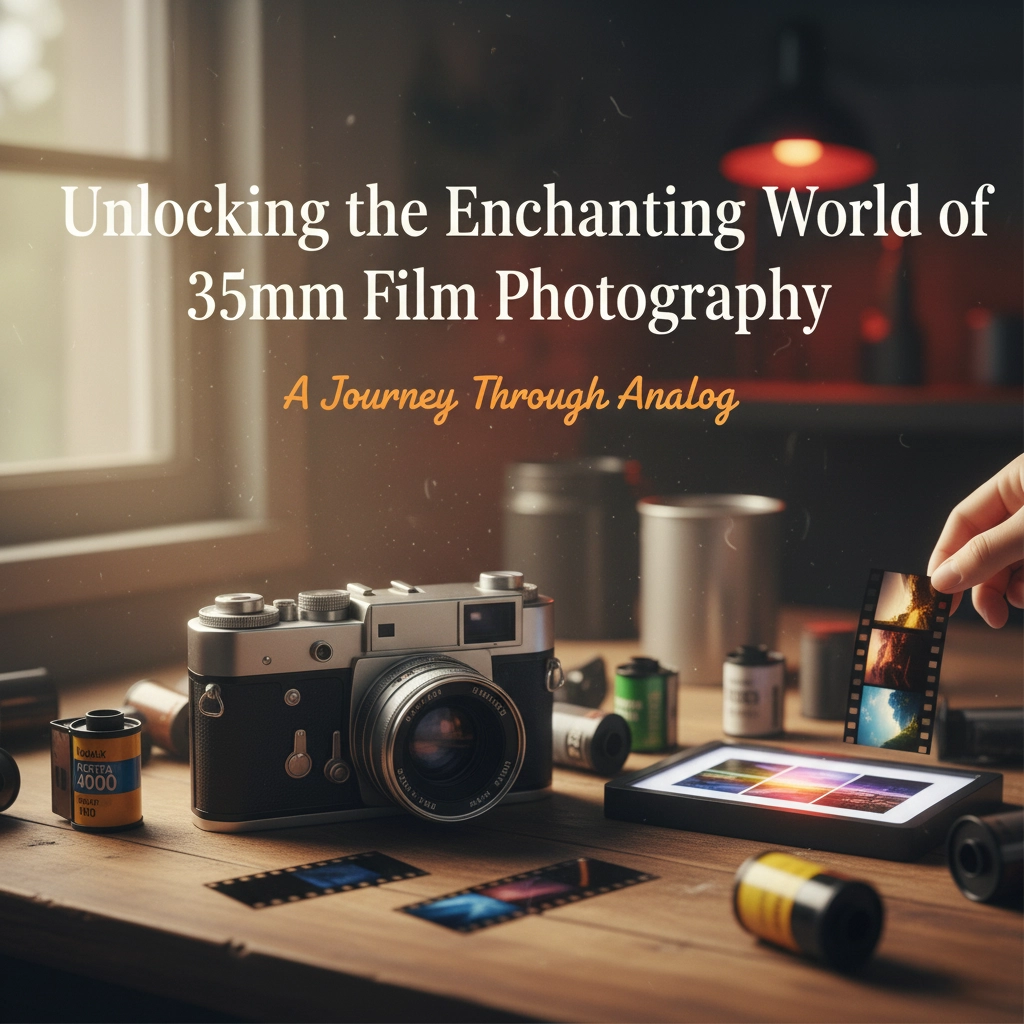
Unlocking the Enchanting World of 35mm Film Photography
35mm Film Photography has come a long way since the invention of the first camera. As technology advances, the medium continues to evolve, but there’s something about these cameras that has its charm. For photographers, there’s a certain nostalgia in using an old camera, especially when it’s paired with 35mm film cameras and black and white processing.
Table of Contents
ToggleExploring Vintage Photography with a 50-Year-Old Canon AE-1 Program Camera
In this article, I’ll take a look at the experience ( a bit of a beginners guide to film photography) of using a 50-year-old Canon AE-1 Program camera for the first time with 35mm photography, black and white film. I’ll also showcase some of the resulting images taken in Hungerford Town Railway tracks and Portsmouth harbour with the Spinnaker tower.
First, let’s talk about the camera itself. The Canon AE-1 was introduced in 1981 and was the first SLR camera to feature a microprocessor. It quickly became popular with amateur photographers due to its ease of use, reliability, and affordability.
Specifications of the Canon AE-1 Program
| Specification | Details |
|---|---|
| Camera Type | 35mm SLR (Single Lens Reflex) |
| Lens Mount | Canon FD Lens Mount |
| Shutter Speed Range | 2 seconds to 1/1000th of a second, Bulb mode |
| Exposure Modes | Program AE, Shutter Priority, Manual |
| Light Metering System | TTL (Through-The-Lens) center-weighted metering |
| ISO Range | ISO 25 to ISO 3200 (manual setting) |
| Film Type | 35mm film |
| Viewfinder Type | Pentaprism Viewfinder with Split Image Focusing Screen |
| Viewfinder Coverage | Approximately 94% vertical and horizontal |
| Focusing System | Manual Focus |
| Film Loading | Bottom Loading with Quick Loading feature |
| Frame Counter | Mechanical, resets automatically |
| Self-Timer | Yes, with a 10-second delay |
| Flash Sync | Hot shoe and PC terminal for external flash |
| Battery Type | One 4LR44 or PX28A 6V battery |
| Dimensions (W x H x D) | 141 x 87 x 48 mm (5.6 x 3.5 x 1.9 inches) |
| Weight | 590g (Body only) |
| Additional Features | Multiple Exposure Capability, Depth of Field Preview Button |
However, with the rise of digital cameras, the AE-1 Program and 35mm film photography in general, became outdated and is now considered an old or vintage. Despite its age, the camera is still capable of producing beautiful images, especially when paired with the right film.
Capturing the Beauty of Film: My First Outing with Ilford HP5 Plus 400
For my first outing since repairing this old beauty, I used Ilford HP5 Plus 400 film, which is a high-speed black and white film that’s perfect for shooting in various lighting conditions. The first thing I noticed about using film is the process of loading the film into the canon ae-1 camera. It’s a bit more time-consuming than simply inserting a memory card into a digital camera. After carefully loading the film, it was time to try 35mm film, so I began to shoot.
35mm Film at Hungerford Town
One of the first locations I visited for 35mm Film photography was Hungerford Town and the old Railway tracks with the town hall building in the background.
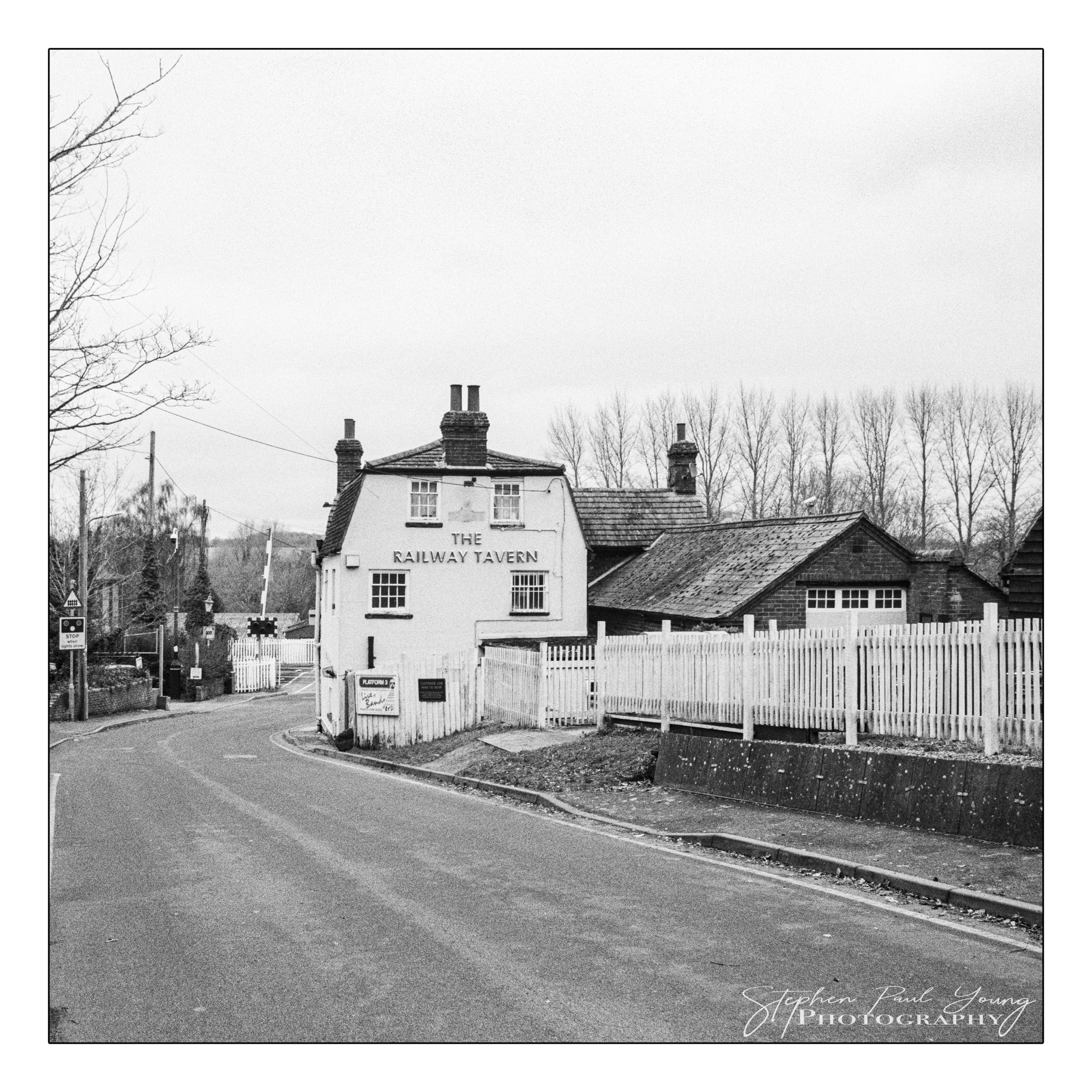
The first thing I noticed was the different approach I had to take to get the perfect shot. With digital cameras, we can easily take multiple shots and review them on the spot. With film, I had to be more selective about when and what I wanted to capture. I took my time, carefully framing each shot, and made sure I was happy with the composition before taking the picture.
When I had the film developed developed, I was thrilled with the results. The black and white tones were stunning, and the level of detail was impressive. I was able to capture the mood and atmosphere of the location, and the vintage canon ae-1P camera added to the nostalgic feel of the images.
The Hungerford Town Railway tracks with the town hall building in the background (above) photo was a perfect example of this. The sharpness and contrast of the photo were stunning. The black and white tones were excellent, and the composition was perfect. A few more Images around Hungerford Railway and Canal;
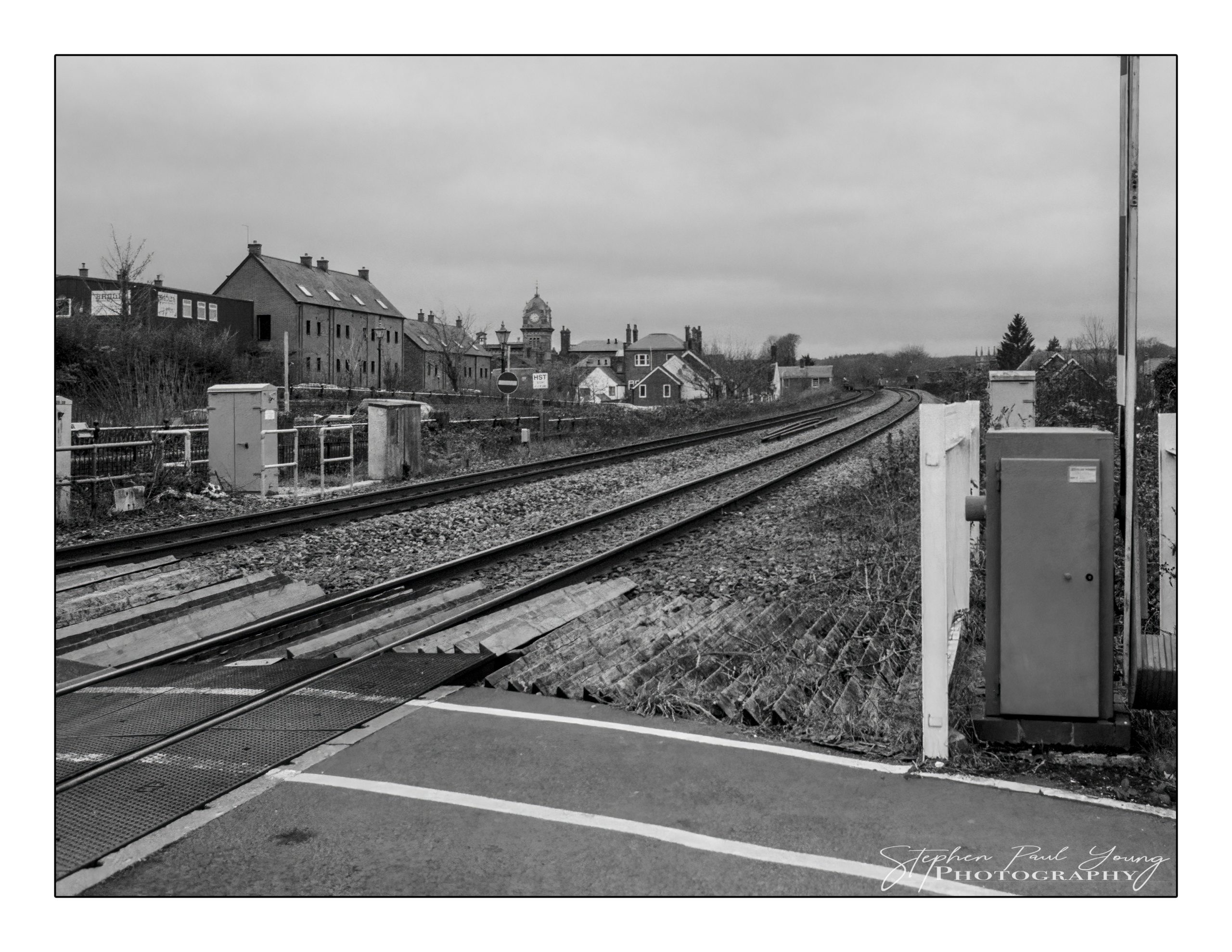
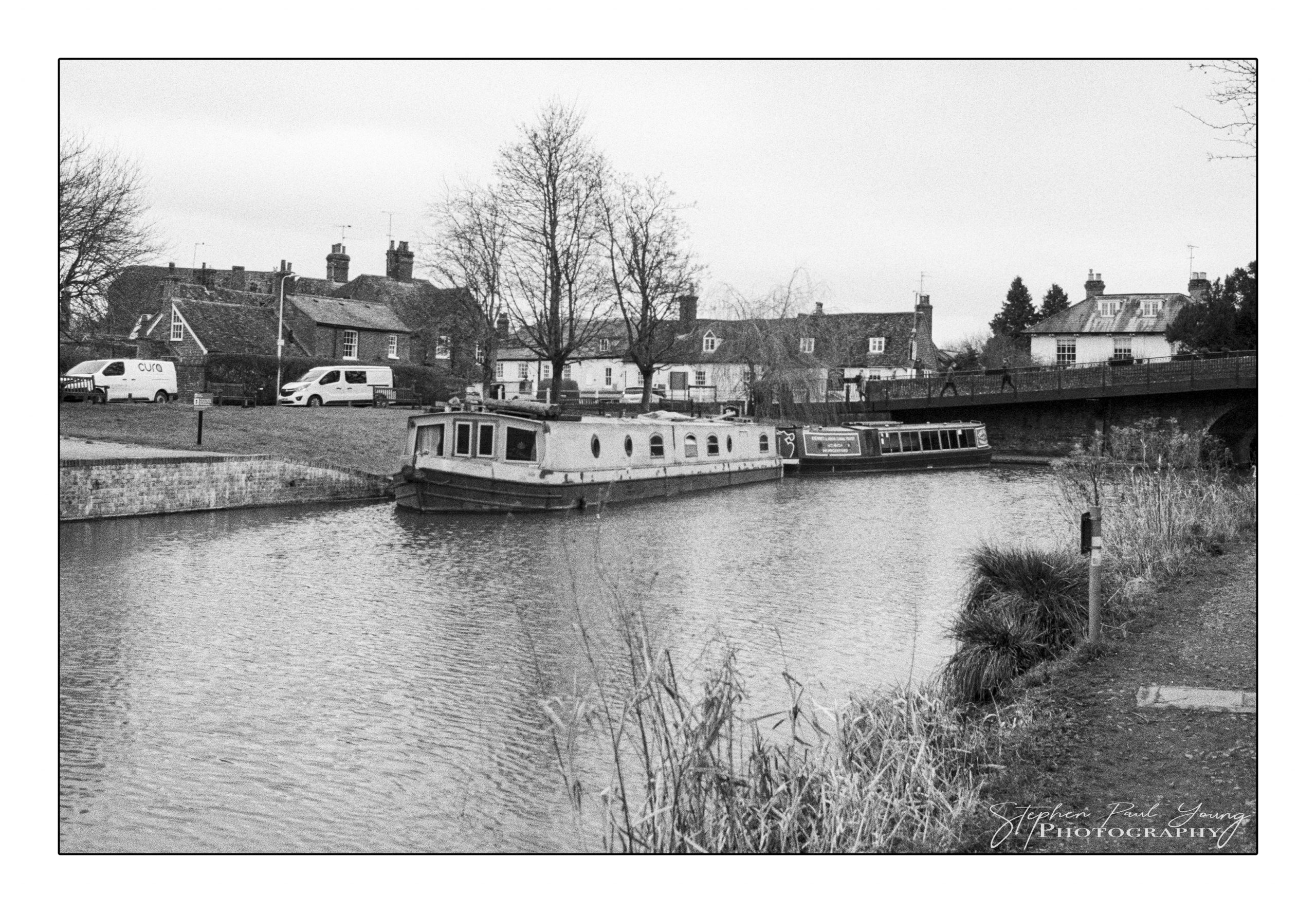
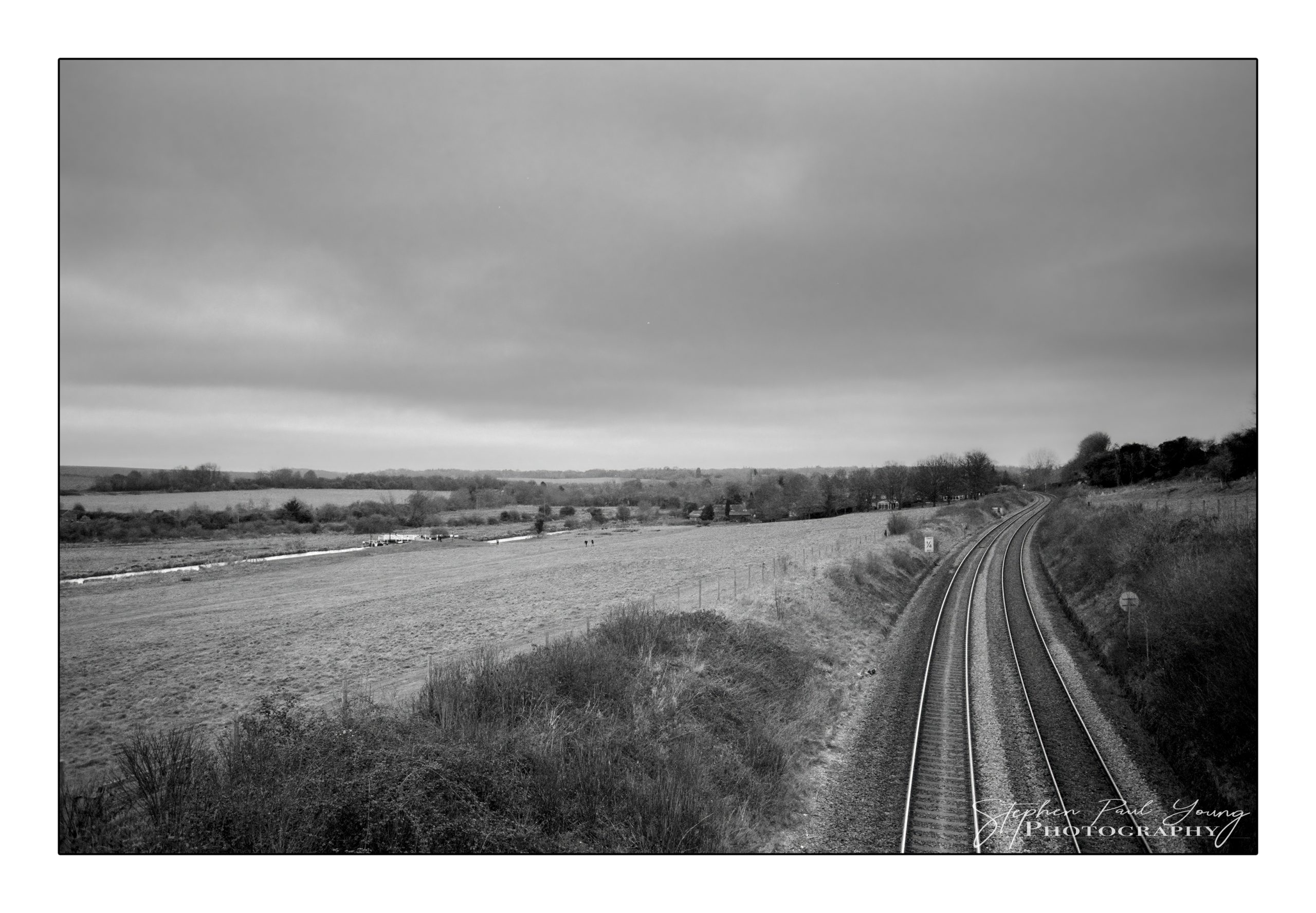
35mm Film Photography in and around Portsmouth
Next for 35mm Film In the Canon AE-1 Program, I visited Portsmouth harbour and the Spinnaker tower. Shooting in a busy location was challenging, but the AE-1 Program camera made it easy to capture the scenes. I was able to manually control the shutter speed and aperture, which allowed me to create some unique images that captured the essence of the location.
Once again, the black and white tones were perfect, and the level of detail was impressive. The Spinnaker tower photo was a great example of this.
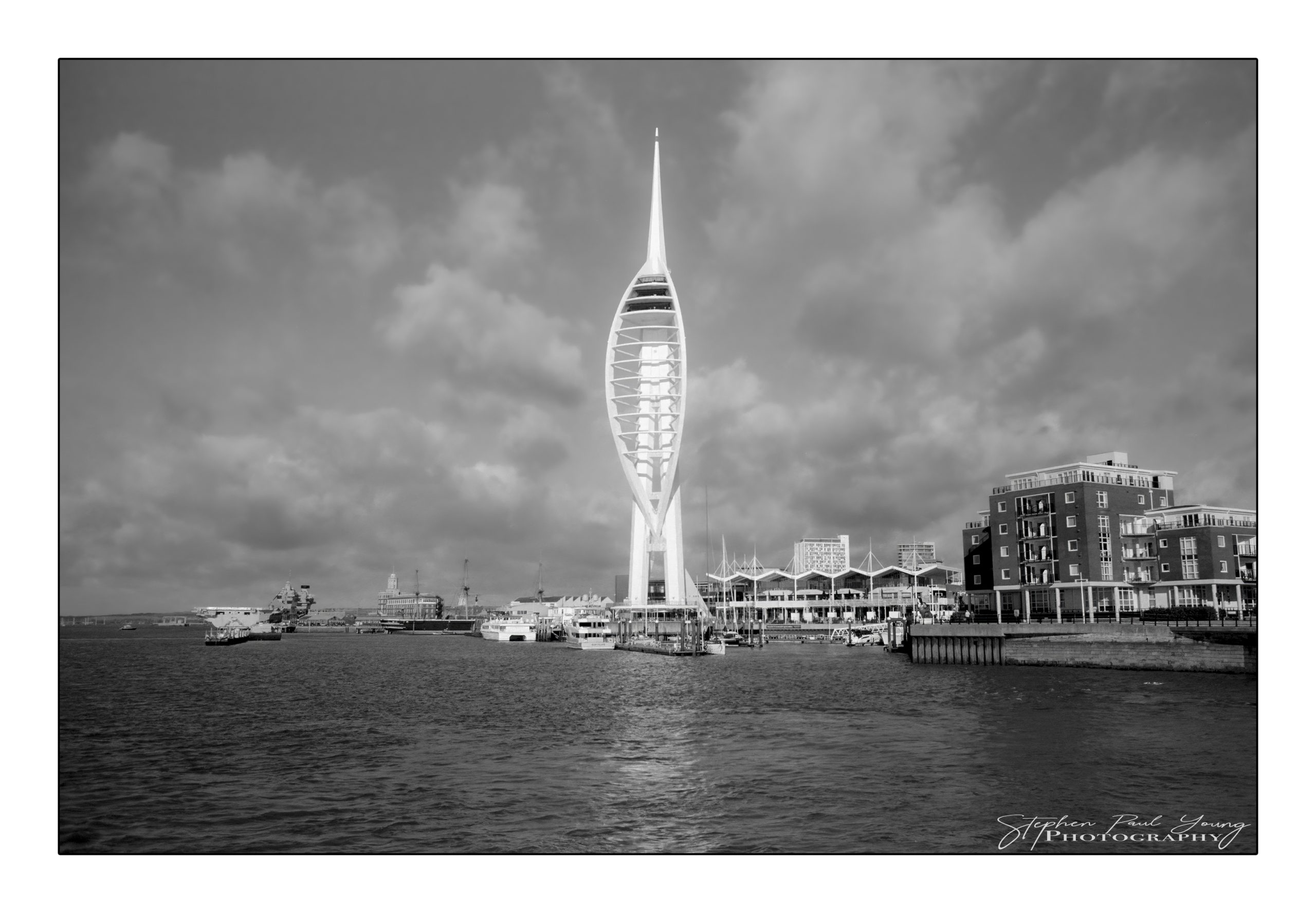
The image was sharp, and the contrast was excellent. The black and white tones were perfect for capturing the mood of the location, and the vintage camera added to the overall aesthetic. A few more from Portsmouth;
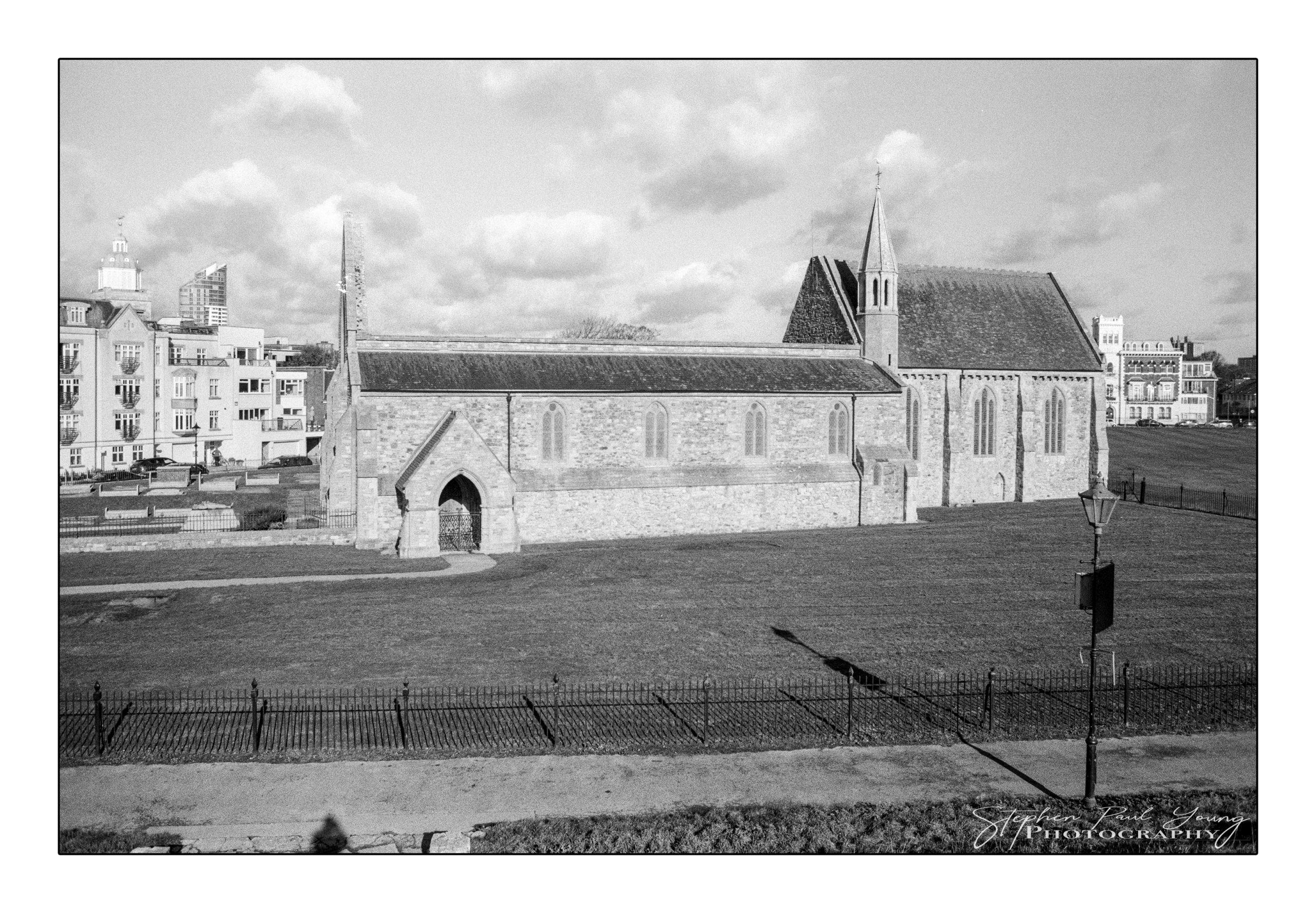
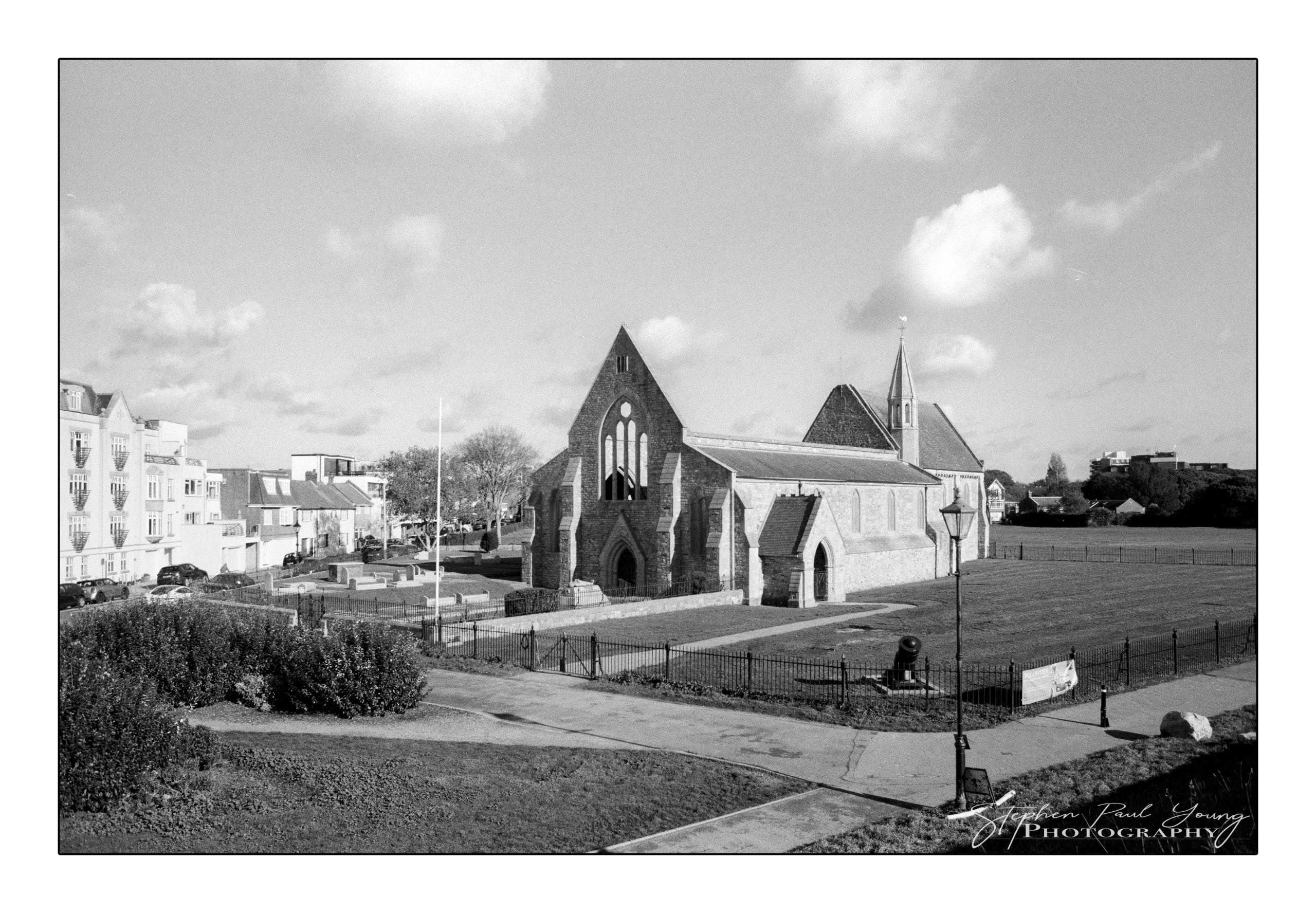
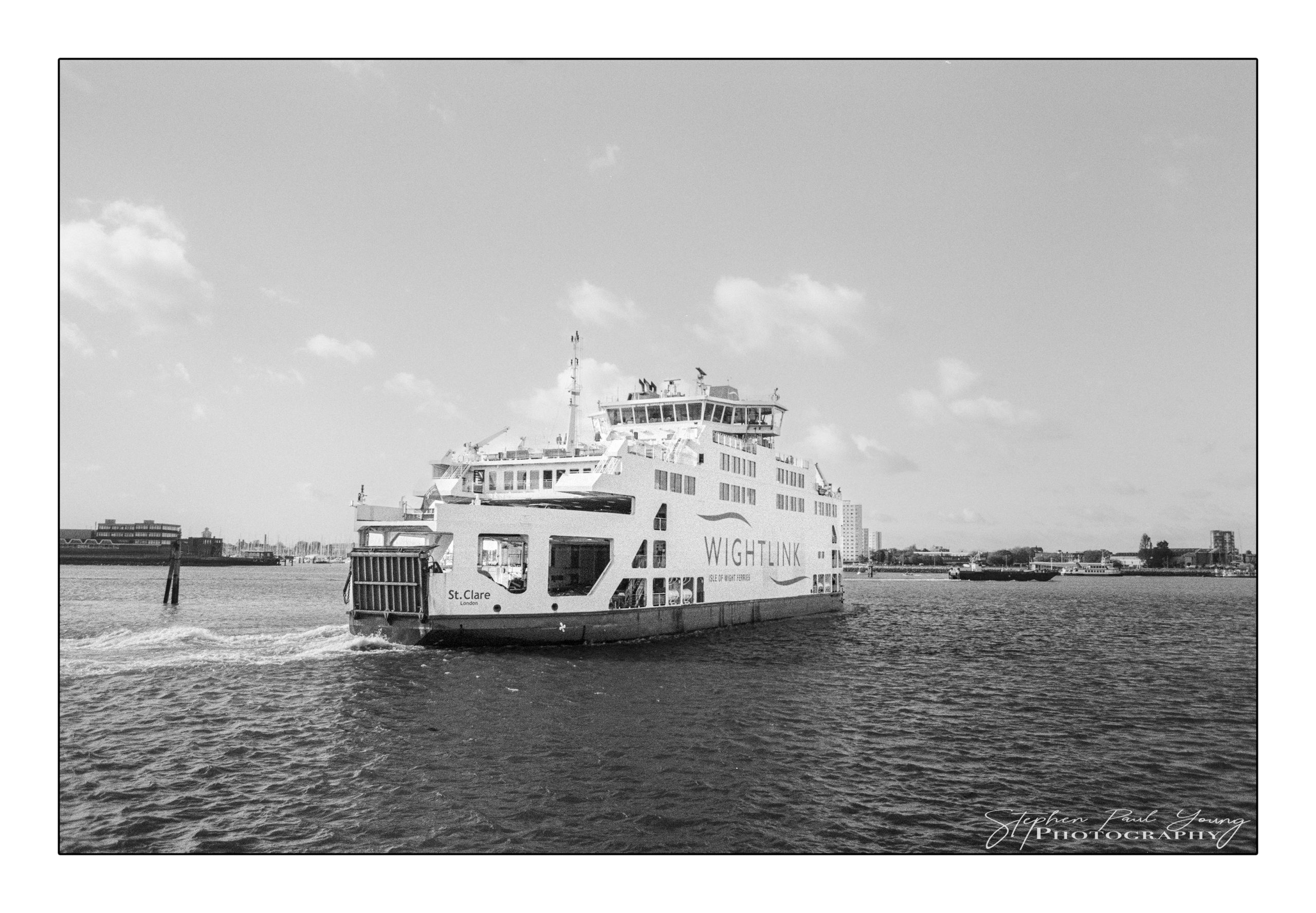
Conclusion
Using the Canon AE-1 Program camera with 35mm film was a unique experience. The camera’s simplicity and ease of use Canon AE-1 P made it enjoyable to use, and the results were stunning. I was able to capture the mood and atmosphere of the locations visited, and the vintage camera added to the overall aesthetic of the images.
This vintage camera, my trusty old Canon AE-1 has taught me to slow down, think and learn to love photography again. You can also see some of these digitised 35mm Film Photography images in my shop.
Likes and Dislikes of the Canon AE-1 Program
| Likes | Dislikes |
|---|---|
| Timeless Design | Manual Focus: May be challenging for beginners |
| Interchangeable Lenses (FD Mount) | Limited Autofocus: Requires manual focus |
| Program AE Mode for Convenience | Limited ISO Range: ISO settings are manual |
| Built-in Light Meter for Exposure | No Exposure Compensation in Program Mode |
| Viewfinder Clarity and Coverage | No Aperture Priority Mode |
| Durable Build Quality | Heavy: Weighs more than some modern cameras |
| Easy Film Loading Mechanism | Limited Shooting Modes |
| Multiple Exposure Capability | No Built-in Motor Drive for Film Advance |
| Compatibility with Canon FD Lenses | Limited Flash Control Features |
| Classic Shutter Sound | Noisy Shutter: Audible in quiet settings |
FAQs: 35mm Film Photography
Q: What is 35mm film photography?
A: 35mm film photography refers to the use of 35mm film, a standardised film format that became widely popular in the early-to-mid 20th century. The film is 35mm wide, and it is a versatile choice for capturing images in analog cameras. This traditional photographic medium involves the use of film rolls containing light-sensitive emulsion to record images.
Q: Why is 35mm film so good?
A: 35mm film is highly regarded for its balanced characteristics. It strikes a sweet spot between image quality and portability, making it a popular choice among photographers. The format allows for excellent detail, dynamic range, and colour reproduction, contributing to the timeless and nostalgic aesthetic that many enthusiasts appreciate.
Q: How many photos can I take with a 35mm film?
A: The number of photos you can take with a 35mm film roll depends on its length, typically measured in exposures. Common film lengths are 24 or 36 exposures, meaning you can capture either 24 or 36 photos on a single roll. Once the film is fully exposed, it needs to be developed before you can view the images.
Q: Why is 35mm so expensive now?
A: The cost of 35mm film has increased over the years due to several factors. First, the demand for film has decreased with the rise of digital photography, leading to reduced production and economies of scale. Additionally, specialised manufacturing and the need for high-quality emulsion contribute to the production costs. Limited availability and niche demand in today’s market also play a role in the relatively higher price of 35mm film.
Like what you read? Fuel my next post with a coffee – hit that PayPal button and keep the caffeine flowing!
[wpedon id=77]
Stephen Paul Young
I’m Steve (Stephen Paul Young), a landscape, digital and film photographer with a deep love for capturing the beauty of nature, light, and atmosphere. Whether I’m out at dawn chasing the perfect sunrise, exploring woodland trails, or experimenting with black-and-white film, photography is my way of seeing the world. I’m drawn to the small details and the big vistas alike, always looking for that moment where light, texture, and emotion come together. For me, photography isn’t just about taking pictures—it’s about storytelling, connection, and the joy of being present in the landscape.
You May Also Like
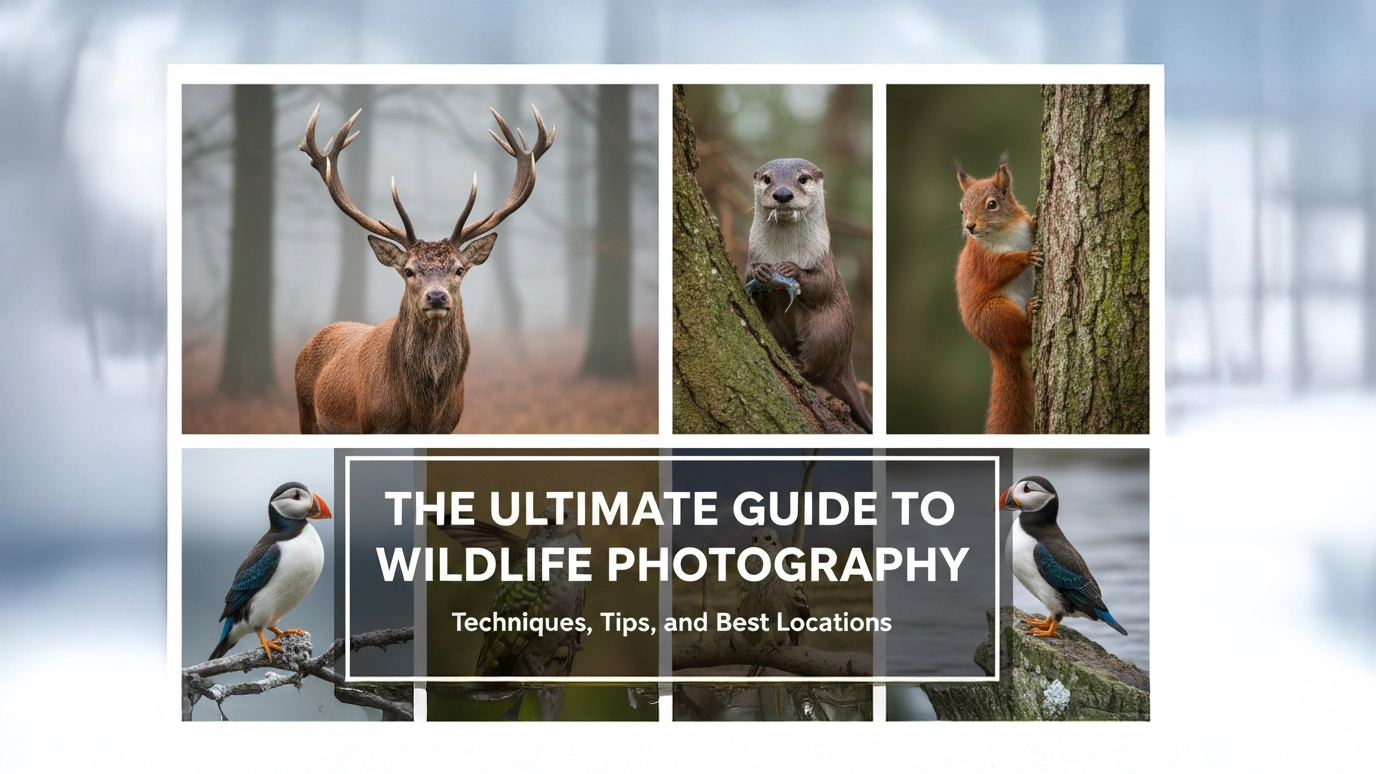
The Ultimate Guide to Wildlife Photography: Techniques, Tips, and Best Locations
19 September 2025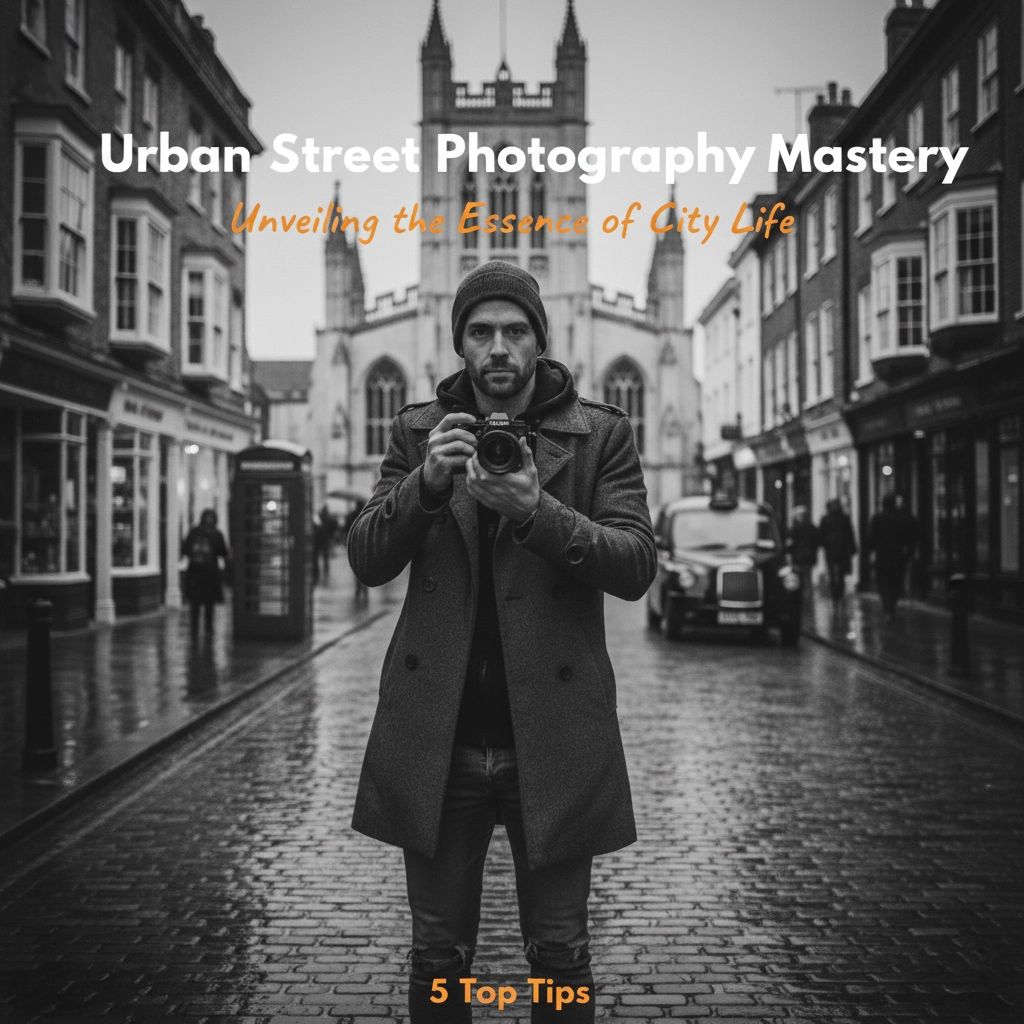
Urban Street Photography Mastery: Unveiling the Essence of City Life & 5 Top Tips
30 March 2023
